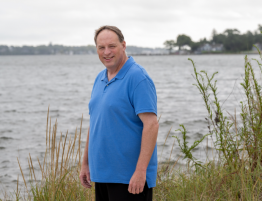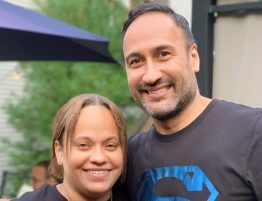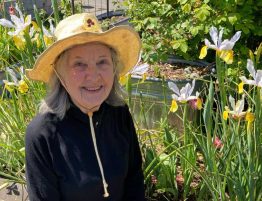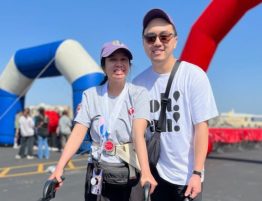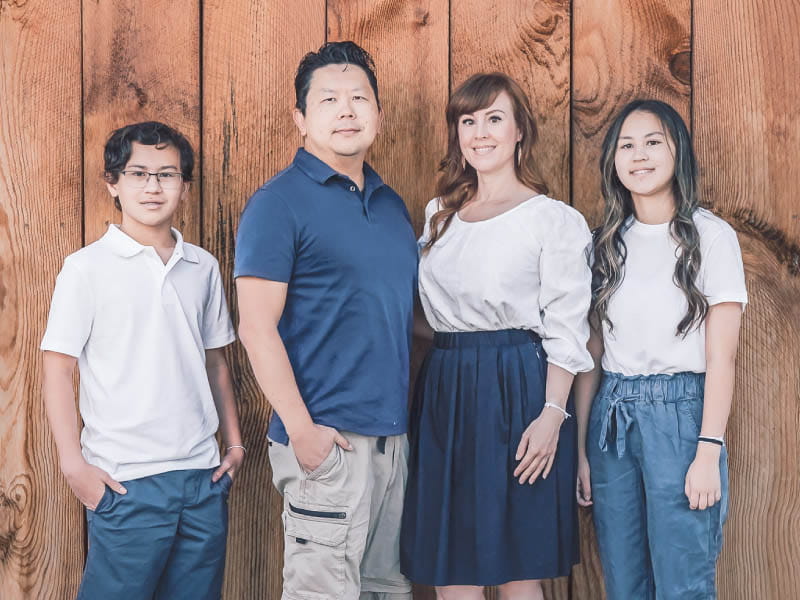
Two months before his wedding, Vang Her had a cough he couldn’t shake.
For weeks he’d hacked incessantly. How could he walk down the aisle or enjoy his honeymoon in New Zealand that way?
But his doctor couldn’t find anything wrong.
With rest, Vang improved. His wedding went off without a hitch. In New Zealand while cave exploring, Vang couldn’t catch his breath. Again, he rested, and the feeling passed.
Not long after, Vang and his wife, Zsuzsa, flew from their home in Southern California to Philadelphia to attend Vang’s sister’s “white coat ceremony,” the graduation-like ritual commemorating her becoming a doctor.
At the baggage carousel in the Philadelphia airport, Vang felt a sharp pain in the back of his head. His mind flashed to a pamphlet he recently received in the mail about the signs of a stroke. He ran through the list in his head. One side of his face started to droop. He couldn’t smile.
“Stroke, help,” he tried to say. But his words came out as gibberish.
Vang, who was 28, lowered to the floor, then passed out. Zsuzsa ran to get help.
Minutes later he woke up in the back of an ambulance. “I’m good!” he said. Still, he opted to go to the hospital.
At the hospital, he lost consciousness again. When Vang woke up the next day, he was in a different, specialized hospital. He’d had several more strokes overnight.
Vang had dilated cardiomyopathy – his left ventricle was enlarged. As the ventricle’s wall stretched over the years, his heart had weakened. It appeared to be failing. This potentially life-threatening condition also caused his strokes.
After two weeks, he left the hospital.
Back home in California, Vang saw a cardiologist who found his heart function had improved. Still, the doctor advised Vang not to do any strenuous activities.
“For how long?” Vang asked.
The answer seemed to be indefinitely. He was a young newlywed but felt like he was being told to live like an elderly man. Vang was dismayed at the prospect of a sedentary life.
He was convinced his days were numbered. He could have five days left or five years. He wanted to squeeze more life into the days he did have and leave Zsuzsa with happy memories. A new doctor told him to let his body guide his level of activity.
So, for the next 14 years, Vang lived.
He and Zsuzsa had a son and a daughter. Vang became an engineer. He traveled the world with his wife and kids. He took blood thinners and got an implantable cardioverter defibrillator, a device that monitors for abnormal rhythms and can shock the heart back into a normal rhythm if needed. When the battery in his ICD wore out, he got a new one.
Other than that, Vang forgot he had heart failure.
Then came 2020.
Vang had been working a new, high-stress job for two years. He had frequent episodes of an irregular heartbeat.
That February he went to urgent care after struggling to breathe. A chest X-ray showed no problems. He got antibiotics for a possible infection. A week later, he wasn’t any better. He went to another urgent care and got a different antibiotic.
Then, the first day of the COVID-19 shutdown in the U.S., Vang woke up at 3 a.m. unable to take a deep breath. Downstairs he leaned on the couch and stretched his torso to get more air in. He called out to Zsuzsa, “Something’s wrong.”
She called 911.
Vang was taken to his local emergency room. Four days later, he woke up from a coma at a hospital two hours away in San Diego. He’d been airlifted there.
“Your heart is failing,” the doctor said. He needed a left ventricular assist device, or LVAD; the machine would essentially do the work of the left side of his heart.
Or, he could get on the transplant list immediately.
But Vang felt no sense of urgency. He’d heard the same recommendation over a decade earlier about a transplant, and he’d been OK.
“I’ll think about it,” he said.
The doctor looked at him skeptically. “We’re worried that if you walk out the door, you’ll have to walk back in soon after,” he said.
After three weeks in the hospital, Vang’s heart improved yet again. He went home without an LVAD or a spot on the transplant list.
Two weeks later, he was back at the hospital. Then again. And again.
“You’re not going home until you get a new heart,” his doctor said firmly after a second airlift to San Diego.
This time, Vang didn’t argue.
Ten days later, Vang got a new heart.
At home, it was a delicate balance for Vang between letting Zsuzsa know how he was feeling and not wanting her to worry. After six months, he was physically recovered, but not emotionally. He felt like he didn’t have direction.
Vang was used to providing for his family and being independent. It was hard to depend on others. One day scrolling online, he came across an article about a heart transplant patient who did an Ironman race within a year of transplantation. The man wasn’t an athlete.
“I can do that, too!” Vang told himself. The discovery gave him direction and purpose. He learned how to swim and started training for a triathlon.
“The transplant was a catalyst for him to get healthy and take care of his new heart,” Zsuzsa said.
Fifteen months after his transplant, he completed a sprint triathlon. Two months later, he finished an Olympic-length race. He completed a full Ironman last year.
“During the race when I thought about quitting, I always went back to this mantra: You didn’t accept this heart to add days to your life, you accepted it to add life to your days. I told myself, you’ve just got to keep moving forward,” he said.
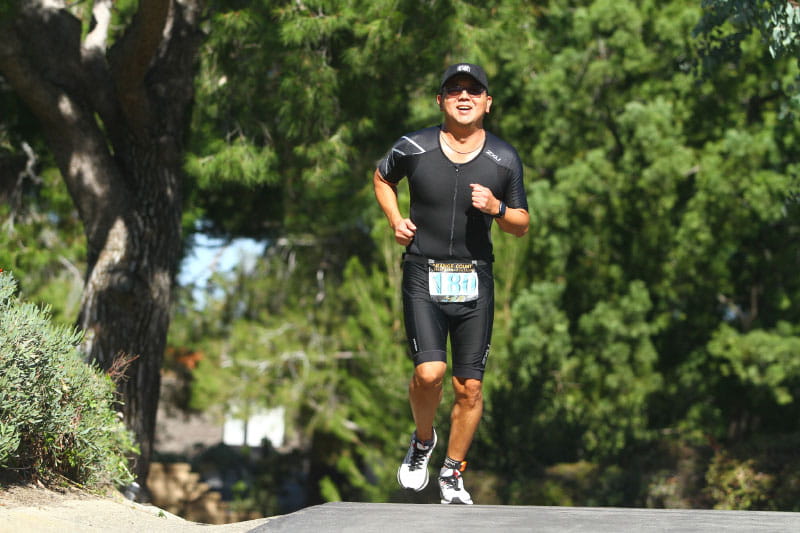
With his four-year transplant anniversary coming up, Vang found himself in another funk. He was back to working full time as an engineer, and he felt better than he did before his transplant. But Vang worried that he hadn’t accomplished enough with his new heart. He felt like he was running out of time again.
He came across a podcast whose guest was the first person to ever complete a full Ironman after a heart transplant, and is approaching 37 years post-transplant. The man’s story of longevity gave Vang a renewed sense of hope. It inspired him to sign up for new races, and Vang plans a return to Ironman races in 2025.
“I need it to keep me motivated to work out and stay healthy,” Vang said. “Staying active is the best medicine for me in terms of my emotional and my physical health. Training outside in the clean air, seeing the sun rise, hearing the birds chirp. It’s these little things to be happy for.”
Stories From the Heart chronicles the inspiring journeys of heart disease and stroke survivors, caregivers and advocates.

